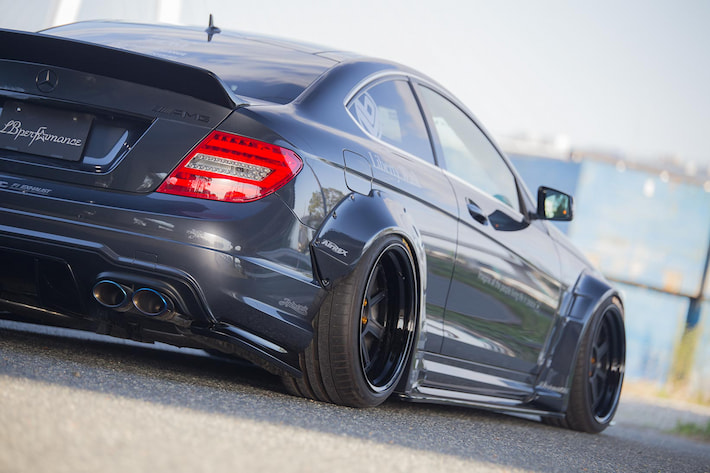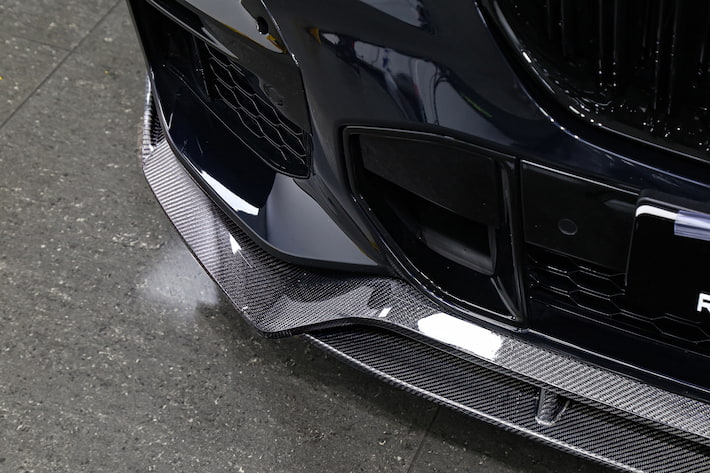Contents
Customization options for any car go by the hundreds, and most gearheads look under the hood for that extra power and speed with extensive upgrades centring on various engine, exhaust and transmission parts. These are what get you more driving pleasure each time you step on the gas. But raw power can also be counter-productive if the chassis and bodywork aren’t up to scratch. Balance is key in almost everything, and in the automotive world too, so any mods under the hood also entail changes to the bodywork with bespoke parts tailored to your car.
This is where body kits can help. Their role is to improve aerodynamics, pushing the car lower to the ground, and preventing the impact of air resistance as speeds increase. Kits can consist of different parts but generally revolve around front and rear spoilers, splitters, side skirts and diffusers to tame air effects increase grip through the tires and improve overall handling.
The Pros of a Car Body Kit
Kits have the main purpose of improving road holding at different speeds, or basically, what is called “ground effects”. The resistance of oncoming air is significantly reduced as different parts redirect it over and to the sides of the vehicle. This glues the car to the ground with increased downforce and also prevents the tires from losing grip in the corners. Add side skirts to prevent air gathering under the vehicle and rear diffusers and spoilers to keep the rear end planted and free from under and oversteer. To sum up, a complete car body kit increases both straight line and turning performance allowing for higher speeds, better acceleration, more stability and improved braking. In short, you get a car that’s way more fun to drive.

Accompanying benefits include lower fuel use and a car that stands out from the crowd. Even basic kits on cheaper or older cars will turn heads, and get you praise from discerning gearheads. The best part is you don’t have to spend a ton of money to get a more responsive vehicle and one that’s unique in more ways than one.
Body Kit Types
Depending on the performance and the aesthetic improvements you’re after, kits consist of different parts and produce different results.
- Lip kits – these consist of spoilers added to your factory bumpers. Their main job is to reduce drag and increase downforce by redirecting air over the car. Lip kits can be subtle or protrude further out, depending on what works with your car’s styling. They also reduce the likelihood of damage by scraping the car against potholes, or direct impact in parking lots.
- Bumper kits – replacing your factory bumpers front and rear is easy with custom bumper kits. These give a unique look and also some aerodynamic improvements if they’re not overcooked.
- Wide-body kits – these consist of wider wheel fenders, side skirts running the length of the doors, and beefier front and rear spoilers. The wider bodywork allows for changes to wheel and tire sizes and setups (particularly for racing uses) and increases cornering stability.
- Full body kits – this is the works. Here you’ll find modified front spoilers paired with splitters, bespoke side skirts, rear spoilers, or larger wings as well as rear diffusers to reduce the effect of remnant high-pressure air under the car. Full kits work best when tailored to the specifics of the track (or where you’re driving) and when sourced with the right materials.

Which Materials Are Body Kits Made of?
Materials determine overall performance, impact how long parts last, and how much you’ll be paying. Fibreglass, polyurethane and carbon fiber are the most common, and each has its pros and cons.
Fiberglass Kits
These are relatively cheap, easy to get for a variety of cars, and also easy to paint on. Fiberglass also works well against UV rays and higher temperatures, meaning it won’t fade or discolor in direct sunlight. There are cons though. The material isn’t exceptionally rigid, so can buckle or crack on impact.
Polyurethane
Body kits optioned in polyurethane are next on the price ladder and justify their asking price with better strength and more flexibility, meaning they’ll last longer and perform better when you’re harder on the gas. Besides being more expensive, polyurethane kits are more complicated to get right, on the heavy side, and can deform under higher temperatures, such as engine or brake component heat.
Carbon Fiber
If you’re after the best performance, the lowest weight and the highest strength, then carbon fiber kits are your best bet. They combine rigidity and flexibility (so no bending or cracking), will last in minor accidents, and have a look to die for. They’re standard inclusions on high-end sports cars, but are now widely available for different car makes and models. The only downside is the higher price, but you do get what you pay for.

Summing Up
Body kit parts are essential when you need better handling, more traction, and stability at both low and high speeds. Different kits produce different results. Some are just for show, building on the otherwise mundane looks of most new cars, but most also combine style with performance in a neat package. Choose kits that are tailor-made to the specific dimensions of your vehicle, sourced in the right materials, and installed by a pro.



